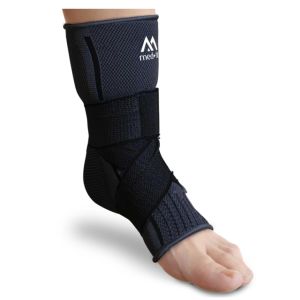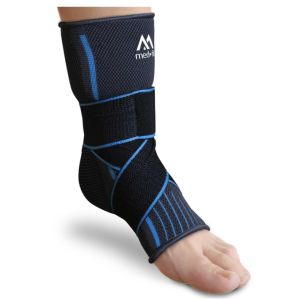Ankle Support
When should I wear an Ankle Support?
Ankle Supports are normally used for those looking for stability as they may have weak ankles, but the majority of people wear these types of supports when recovering from an injury. Most users wear them for daily tasks, others may only use ankle supports during recreational activity or for sports.
There are few questions our customers ask us when they’re buying ankle support.
Can I wear an ankle brace in bed?
Yes, however it ultimately depends on personal preference. When your leg is in an upright position, particularly if you're dealing with an ankle injury and aiming for recovery, it is common for individuals to remove the support during sleep. Allowing your ankle to rest without the support can facilitate the recovery process, whereas wearing it at night might potentially lead to additional harm and restrict movement. There are exceptions, such as cases involving ligament tears, fractures, or if you frequently find yourself falling asleep on your ankle.Wearing an Ankle Support at home
Yes, the decision largely hinges on personal preference and the nature of the injury you might be dealing with. Typically, individuals with more severe ankle injuries, such as sprains and fractures, tend to utilize a support indoors. However, for most mild to moderate injuries, wearing an ankle brace inside your home may not be necessary unless you're experiencing issues like balance problems or difficulty walking.Going out
Typically, individuals using our Ankle Supports prefer to wear them while venturing outdoors and engaging in daily activities. Wearing the supports proves advantageous, especially when walking on uneven terrain or navigating through crowded areas.When playing sports or forms of recreational activity
Engaging in sports or recreational activities heightens the risk of ankle injuries, and without proper bracing, the likelihood of exacerbating existing damage is even greater. If you're approaching the end of your recovery and wish to participate in physical sports, donning an ankle brace and ensuring a snug fit can provide stability and minimise the risk of future ankle injuries. Our ankle supports come equipped with adjustable compression straps for added customization.What about wearing an Ankle Brace all day?
It is advisable to consult with a medical professional regarding this matter, as improper use may result in more harm than good. A healthcare professional can provide guidance on wearing the support during specific times of the day, possibly even during nighttime, and may recommend limiting usage to specific physical activities.What can Ankle Supports be used for?
Ankle Supports are used for a range of different conditions, issues, injuries and much more. Some of these include:
- Sprains
- Ligament Damage
- Sprained Ankles
- Arthritis
- Plantar Fasciitis
- Tendonitis
Typical Uses for Ankle Supports:
- Walking
- Running
- Football
- Rugby
- Cricket
- Basketball
- Ice Hockey
- Netball
Can an Ankle Support Help Reduce swelling?
Injuries such as ankle fractures or sprains often result in rapid swelling around the affected area. Ankle supports play a crucial role in safeguarding mobility, thereby aiding in the prevention of swelling and promoting improved blood circulation.
Stride Flex incorporates 360-degree compression, applying gentle pressure to the ankle, which can effectively reduce swelling and alleviate pain. If you find the brace becoming overly tight or observe swelling above the ankle support, it may indicate that the support is too constrictive for your ankle, and prompt removal is recommended.
How ankle supports can improve healing
Do Ankle Supports work?
How to Wrap an Ankle for Support
Adjust the tightness according to your preference to ensure a secure fit. Finally, secure the straps in place at the front, pulling them snug to not only guarantee a stable fit but also to enhance the overall support for your ankle.
FAQ’s
- Compression around the ankle:
The support should provide adequate compression to address the specific needs associated with arthritis. - Comfortable fit:
The emphasis should be on a comfortable fit, avoiding excessive tightness that could cause discomfort. - Support for continued activity:
An effective ankle support should enable individuals to engage in sports or other recreational activities without hindrance.
Our Ankle Braces is meticulously designed with 4-way compression, catering to those dealing with tendonitis, ankle injuries, and helps those with arthritis. The adjustable straps offer precise compression and a customized fit. These straps play a crucial role in enhancing ankle stabilisation, making it an excellent choice for individuals seeking to improve circulation, alleviate joint and tendon pain, and reduce the overall load on the ankle.





